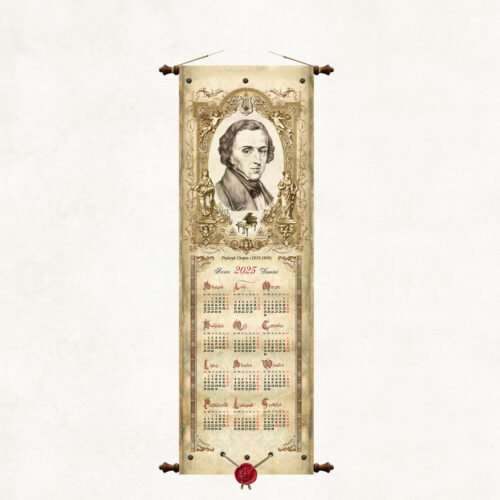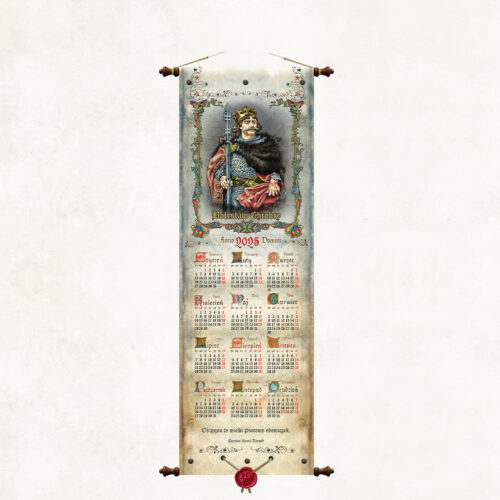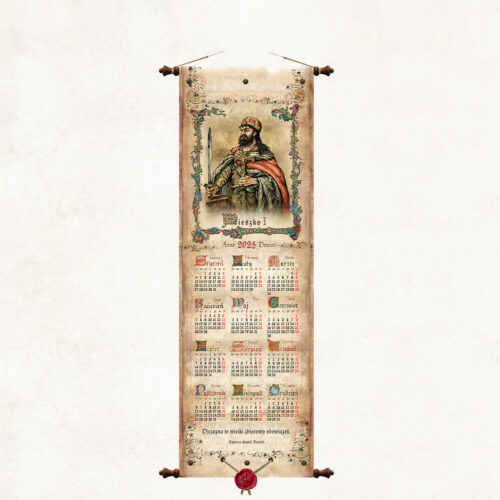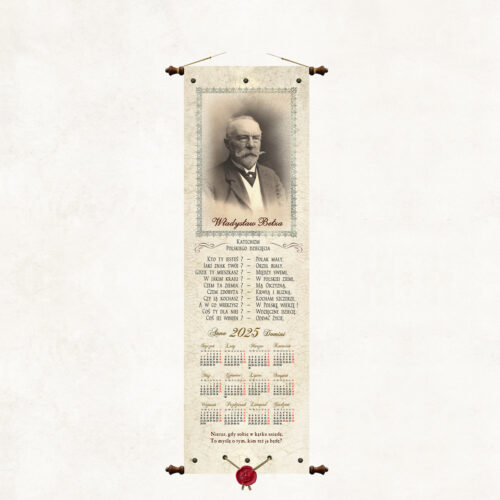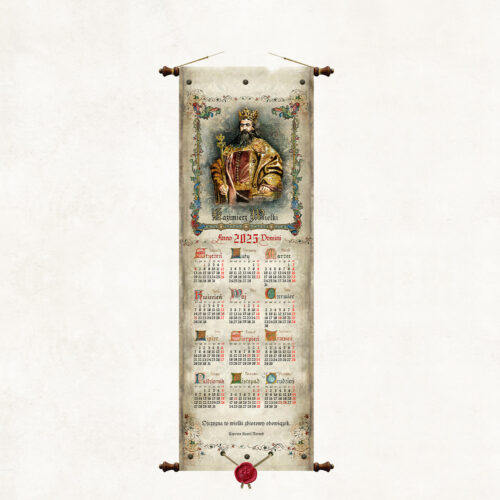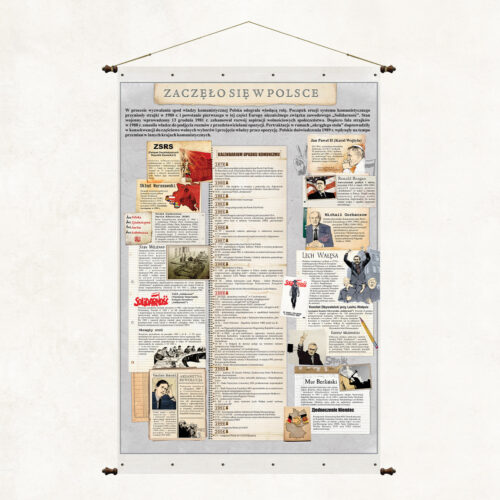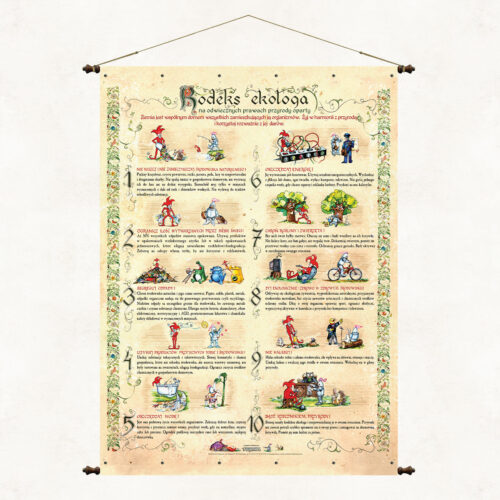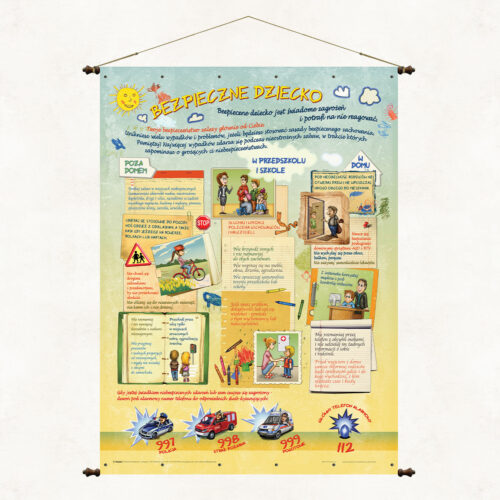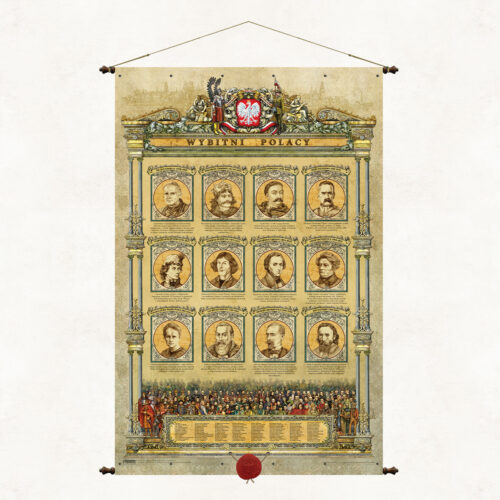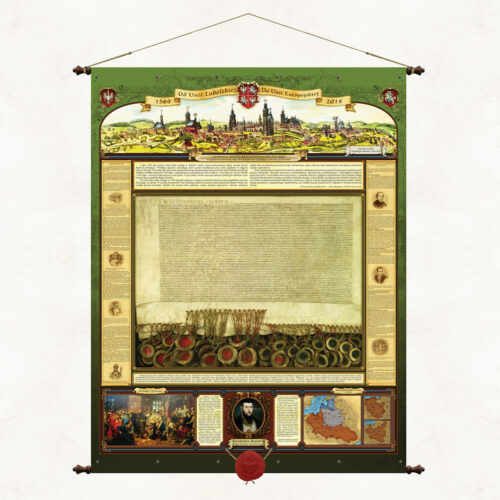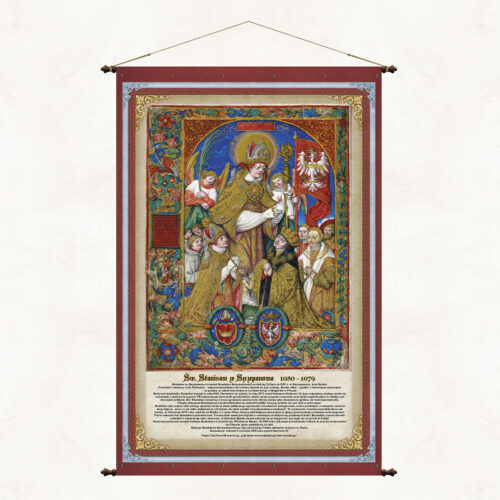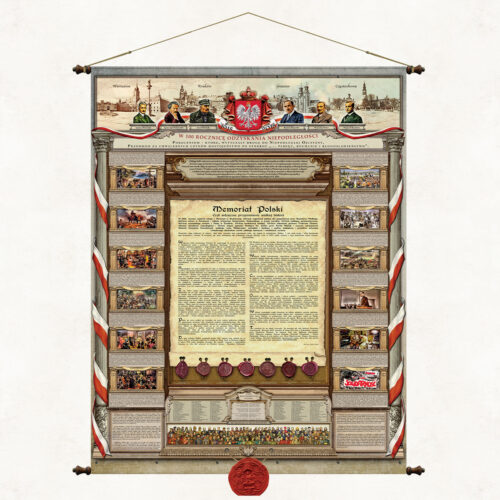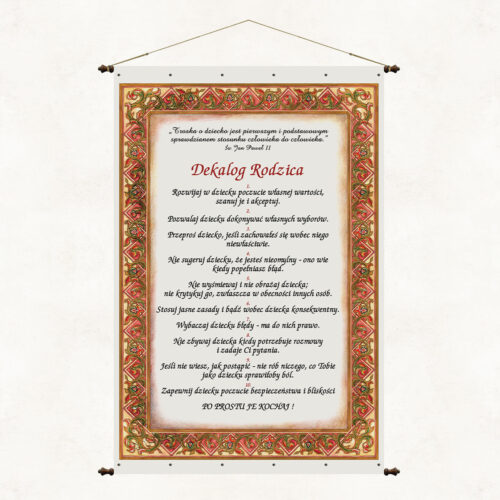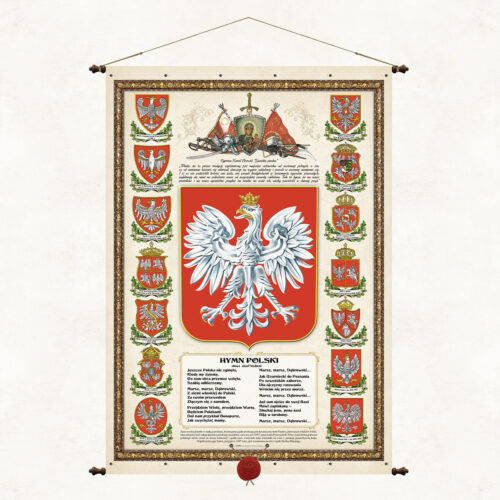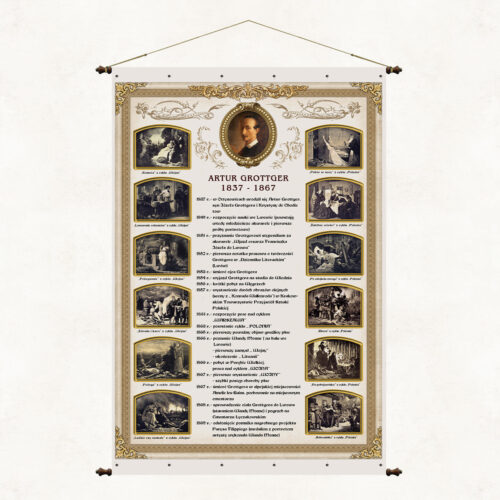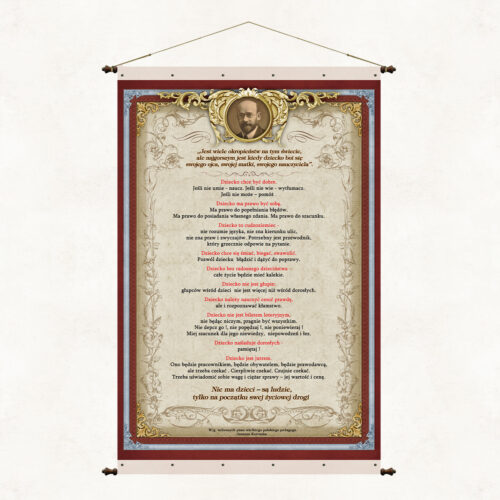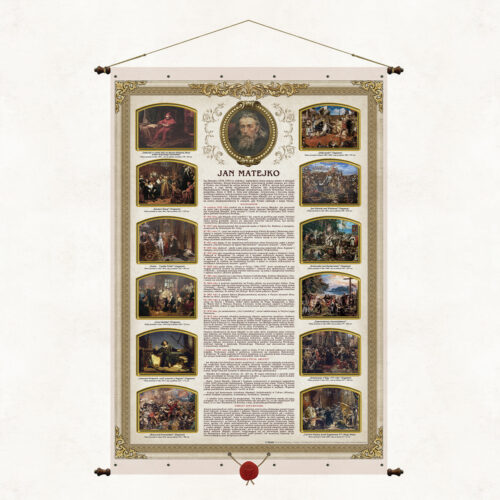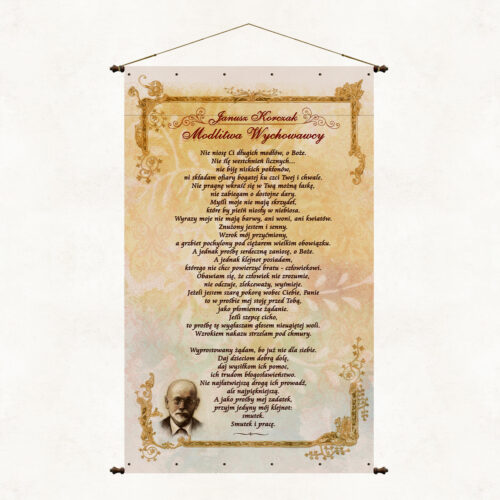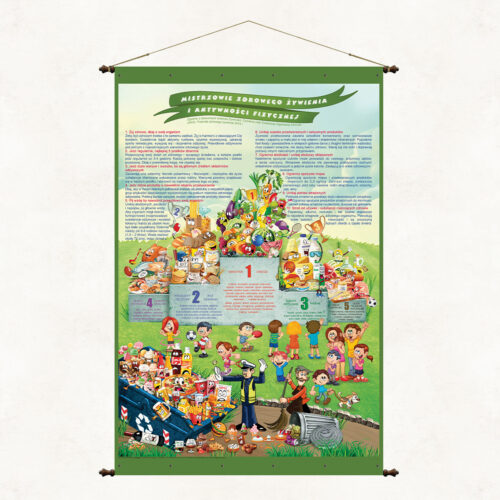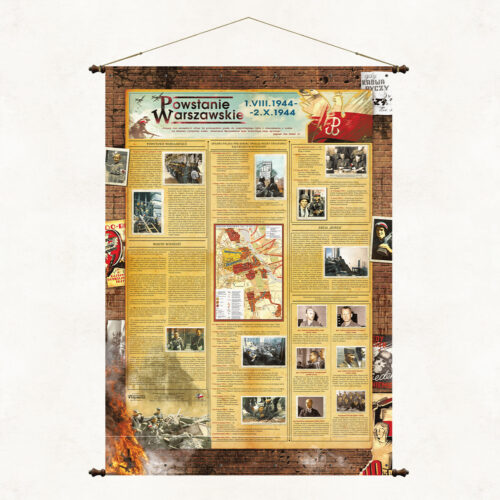-
Fryderyk Franciszek Chopin (1810 - 1849) Fryderyk Chopin (French: Frédéric Chopin), Polonized form: Szopen (born February 22 or March 1, 1810 in Żelazowa Wola, died October 17, 1849 in Paris) - Polish composer and pianist. From October 1831 he lived in France. He is considered one of the greatest Romantic composers, as well as one of the most important Polish composers in history. He was one of the most famous pianists of his time, often called the poet of the piano. Elements characteristic of Chopin's works are in-depth expression and drawing on the stylistic patterns of Polish folk music.
-
BOLESŁAW CHROBRY (967 - 1025) Son of Mieszko I, the first crowned king of Poland. He was an ally of Emperor Otto III, whom he hosted in Gniezno in 1000. He led victorious wars for Milsko and Lusatia. He organized missionary trips to Kyiv. He placed his son-in-law Svatopluk on the Russian throne and regained the Cherven Castles, previously occupied by Prince Vladimir of Kiev, annexing them to his state. Historians are increasingly adding the word "Great" to his name.
-
MIESZKO (922–992) The first historical ruler of Polish lands, the actual creator of Polish statehood. An efficient politician and a talented leader. He fought for Western Pomerania and wars with the Czechs, conquering Silesia and Lesser Poland. By being baptized in 966, he strengthened the state, equaling it with the Christian countries of Europe. He established a Polish bishopric in Gniezno and initiated the construction of numerous defensive strongholds and churches.
-
Scroll calendar - Władysław Bełza Władysław Bełza (born October 17, 1847 in Warsaw, died January 29, 1913 in Lviv) - Polish neo-romantic poet, writing in a patriotic spirit, called the eulogist of Polishness. Publicist, animator of cultural, educational and press life, co-founder of the Polish educational organization Macierz Polska. Author of, among others, the famous patriotic poem "Catechism of a Polish Child" which begins with the words Who are you? - Little Pole...
-
CASIMIR THE GREAT (1310 – 1370) The last of the Piast dynasty, king of Poland from 1333. Due to his talented foreign policy and the small number of wars fought, he was called the "diplomatic king" and "he who found Poland wooden and left it brick", due to the construction of dozens of new cities and expansion or building several hundred new castles and fortresses. His reign actually consolidated the process of unification of Polish lands and led Poland out of political isolation in Europe, after nearly two centuries of division.
-
Wartościowa edukująca historycznie publikacja, której intrygujący tytuł pobudza do zastanowienia, o jakie wydarzenie historyczne chodzi. W Polsce miało początek wiele wydarzeń, ale nie wiele z nich jest tak fałszywie interpretowanych przez część europejskich historyków, jak właśnie początek i przyczyna upadku reżimów komunistycznych a szczególnie tego najgorszego – Związku Radzieckiego. Staramy się poprzez tę planszę dać udokumentowaną odpowiedź na istotne pytania dotyczące tamtego okres i tamtych wydarzeń.
-
The board presents a selection of over 120 outstanding Poles who made a significant contribution to the creation and strengthening of Polish statehood, culture and national heritage. Their images appear at the bottom of the map and are numbered, which allows easy identification of the person according to the list below. In the center of the board there are portraits of 12 figures particularly important to Poles and our national tradition.
-
The board was published in 2019, on the 450th anniversary of the Union of Lublin. The attractive, stylized form of the publication presents the history and significance of that great event. We presented: – content of the act of the Senate of the Republic of Poland establishing 2019 as the year of the Union of Lublin – a photocopy of the Act of the Union of Lublin in actual size – panorama of Lublin from 1614 – extensive fragments of the original text of the union – a brief historical outline of events related to the Union of Lublin – fragment of the will of King Sigismund II Augustus referring to the Union of Lublin – image of Jan Matejko's painting - Union of Lublin – Map of the Polish-Lithuanian Commonwealth from the 17th century. The board is topped with a wax seal with an eagle, is 98 cm wide and is mounted on decorative bars.
-
The board commemorates Saint. Stanisław of Szczepanów (also Stanisław Szczepanowski), bishop of Krakow, martyr, saint of the Catholic Church and one of the main patrons of Poland. The illumination placed on the board shows Saint. Stanisław as the patron saint of the Kingdom of Poland and comes from the work of Jan Długosz entitled Catalog of the Archbishops of Gniezno (Latin: Catalogus archiepiscoporum gnesnensium) from before 1476. The author of the painting is the Cistercian Stanisław Samoshootnik, a. Stanisław of Mogila (1480 - 541) - Polish painter, illuminator and miniaturist. The illustrations for the catalog were made several dozen years after Jan Długosz's death.
-
The Polish Memorial is a unique board, a one-of-a-kind vademecum of Polish history, presenting in a condensed verbal and graphic form the principles of the thousand-year-old heritage of the Polish nation. The main theme of the publication is an anniversary calendar of Polish history written in the form of a historical essay by prof. Andrzej Nowak, an outstanding scientist and committed patriot. The 100th anniversary of regaining independence became an impulse for the historian to present other significant anniversaries. Describing over 1,000 years of Polish history, the professor brings us closer to the historical continuity of Polish fate and the importance of the generational transmission of culture and tradition. At the bottom of the memorial, we have placed replicas of historical seals of Polish rulers and people and institutions significantly inscribed in Polish cultural heritage. Apart from the title essay, there are symbols of national identity on the board: - national emblem and anthem, - engravings depicting the former capitals of Poland - Gniezno, Krakow and the modern capital - Warsaw, and Częstochowa as the spiritual capital of the country, - images of the most outstanding Poles, those considered to be the Fathers of Independence in 1918, and representatives of generations that have maintained their independence deed and legacy over the millennium, - significant messages and statements about Poland and Poles, - a brief description of the history of Poland's independence and symbolically illustrating it with engravings. The canons of Polishness written down and illustrated on the board by the editors, apart from their educational function, are also an aesthetic element of the patriotic decor of apartments and offices, expressing respect and attachment to tradition.
-
Patriotic and educational board, compendium of national symbols. We make it in various sizes so that customers can adjust it to their needs and local conditions. The publication presents the modern state emblem, a selection of historical emblems, and the full text of the national anthem (Dąbrowski Mazurka).
-
Plansz edukacyjna przedstawiająca kalendarium życia Artura Grottgera wraz z wybranymi grafikami arsysty.
-
The nutrition board "Champions of healthy eating and physical activity" is a verbal and graphic illustration of the principles of healthy eating. This is an innovative scheme that groups food products and presents them in the form of a sports podium with a very clear evaluative division. Unlike the popular food pyramid scheme, which is not very suggestive for young people, our original board presents the healthiest products in a fun and clear way in the first and subsequent places on the podium. Unhealthy or even harmful dishes were pointedly placed in the garbage. The graphic message is complemented by ten essential principles of healthy eating placed at the top of the publication.
-
An educational board published to commemorate the Warsaw Uprising.

